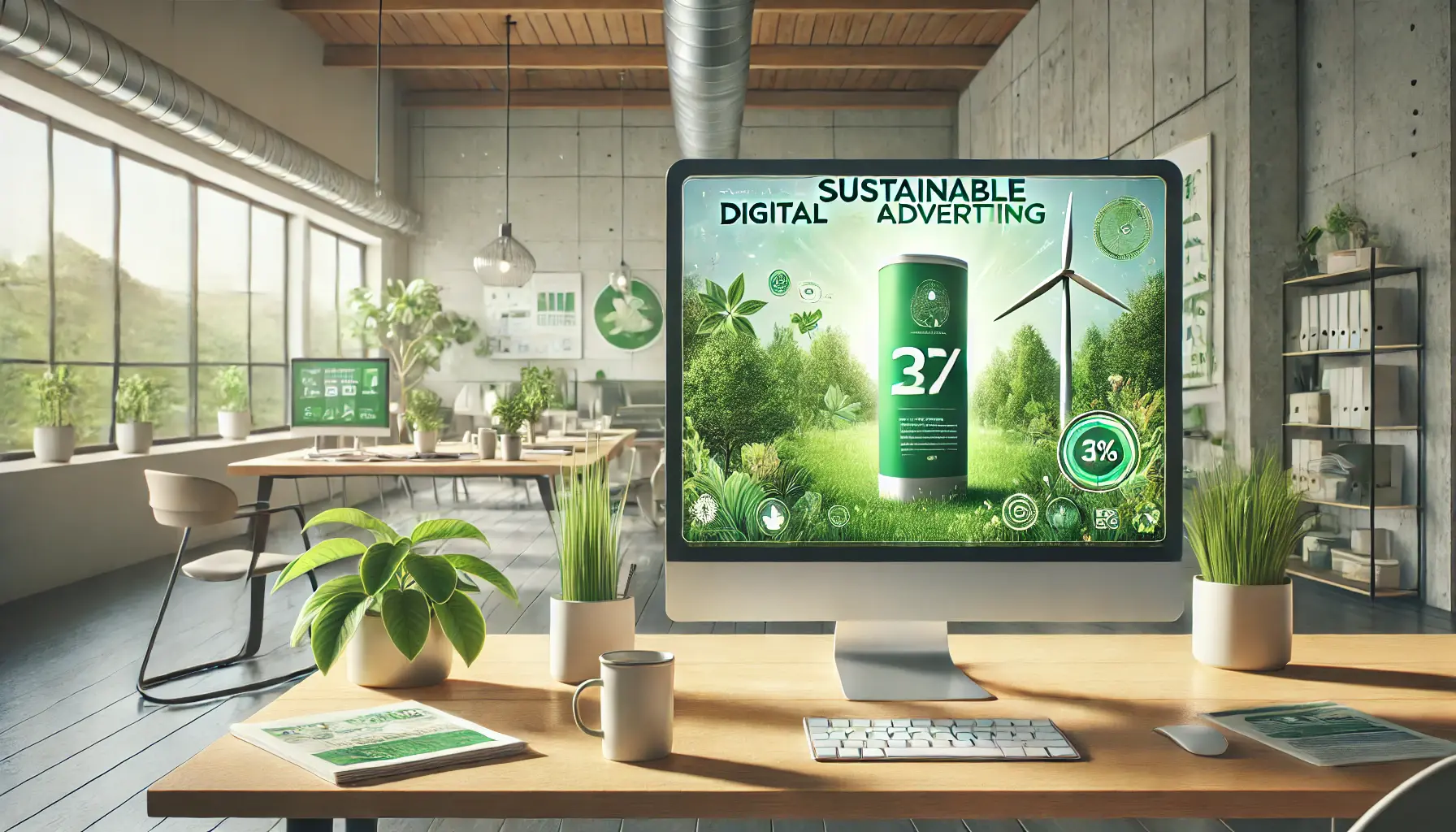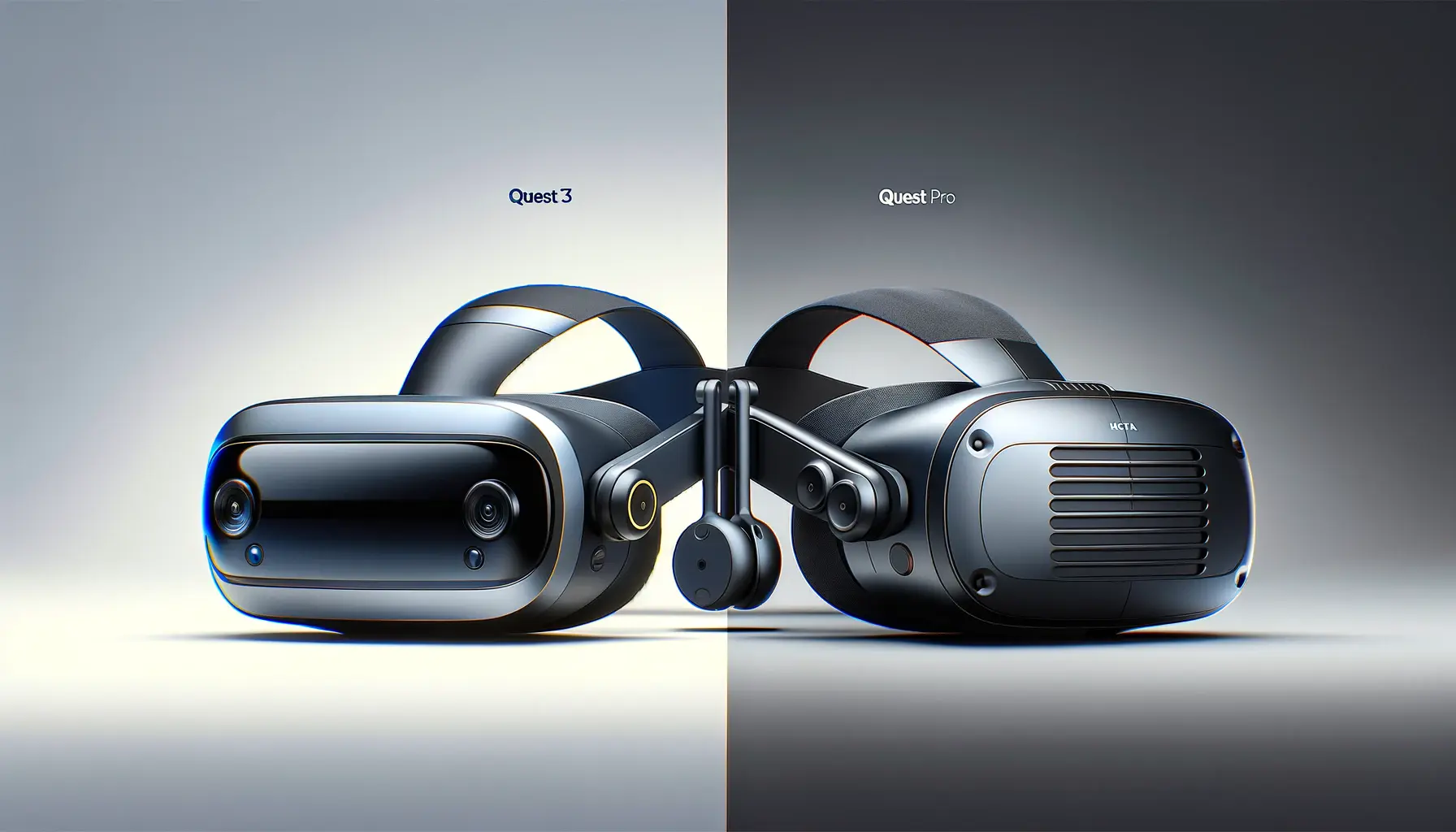The conversation around sustainability in technology has never been more pertinent than it is today.
As we delve into the realms of virtual reality, the Meta Quest 3 emerges as a beacon of innovation.
However, the question of its eco-friendliness remains a topic of considerable debate.
This article aims to explore the sustainability of the Meta Quest 3, examining its environmental impact and the efforts made by Meta to align with eco-friendly practices.
In the world of virtual reality, the Meta Quest 3 represents a significant leap forward.
With its advanced features and immersive experiences, it stands at the forefront of VR technology.
Yet, as consumers become increasingly conscious of their environmental footprint, the sustainability of such devices comes under scrutiny.
The Meta Quest 3, with its cutting-edge technology, offers a unique opportunity to assess how modern gadgets can balance performance with environmental responsibility.
- Understanding Sustainability in Tech
- Evaluating the Environmental Impact of Meta Quest 3
- Meta’s Sustainability Initiatives and Commitments
- Challenges and Controversies in Tech Sustainability
- Innovations in Eco-Friendly Technology
- Consumer Awareness and Participation in Sustainability
- The Future of Sustainability in Virtual Reality
- Embracing Sustainability in the Era of Virtual Reality
- Meta Quest 3 Sustainability FAQs
Understanding Sustainability in Tech
The Importance of Eco-Friendly Practices
Sustainability in technology is not just about reducing emissions or using recyclable materials; it’s about a holistic approach to designing, manufacturing, and disposing of devices in a manner that minimizes their environmental impact.
This includes considerations like energy consumption, the lifecycle of the product, and the use of hazardous materials.
For companies like Meta, this means embedding sustainability into the very fabric of their product development process.
As the tech industry evolves, so too does the definition of sustainability.
It’s no longer enough to offer token gestures towards eco-friendliness.
Consumers demand genuine, impactful actions that contribute to a more sustainable future.
This shift in consumer expectations has prompted companies to rethink their strategies, aiming for innovations that do not compromise on environmental values.
Meta’s Approach to Sustainability
Meta has publicly committed to sustainability, outlining various initiatives aimed at reducing its carbon footprint and enhancing the eco-friendliness of its products.
The Meta Quest 3 is a testament to this commitment, designed with sustainability in mind.
From its packaging to its energy efficiency, every aspect of the device is scrutinized for its environmental impact.
However, the challenge lies in balancing the high demands of VR technology with the need for eco-friendly solutions.
VR headsets require powerful processors, high-resolution displays, and advanced sensors, all of which can contribute to significant energy consumption.
Meta’s approach involves not only optimizing these components for better energy efficiency but also exploring innovative materials and manufacturing processes that are less harmful to the planet.
Sustainability in technology encompasses a comprehensive approach, focusing on the entire lifecycle of the product, from design to disposal.
Evaluating the Environmental Impact of Meta Quest 3
The environmental impact of electronic devices like the Meta Quest 3 is a multifaceted issue, encompassing everything from the extraction of raw materials to the energy consumed during use and the disposal at the end of its life.
To truly understand the sustainability of the Meta Quest 3, it’s essential to dissect these components and evaluate Meta’s efforts to mitigate their environmental footprint.
One of the critical areas of focus is the materials used in the construction of the Meta Quest 3.
The choice of materials not only affects the device’s performance and durability but also its recyclability and the environmental impact of its production.
Meta has made strides in selecting materials that are both high-quality and less harmful to the environment, though the specifics of these materials and their sourcing practices are crucial to this evaluation.
Energy Efficiency and Usage
Another significant aspect of the Meta Quest 3’s environmental impact is its energy consumption.
Virtual reality headsets are known for their high power requirements, which can lead to substantial energy use over time.
Meta has implemented several measures to enhance the energy efficiency of the Quest 3, such as optimizing software to reduce power consumption and incorporating energy-saving features that minimize idle power draw.
- Optimization of software for reduced power consumption
- Incorporation of energy-saving features to minimize idle power draw
Recyclability and End-of-Life Management
The end-of-life management of electronic devices is a critical component of their environmental impact.
The Meta Quest 3’s design considers ease of disassembly and the recyclability of its components.
Meta encourages users to recycle their devices responsibly and has partnered with recycling organizations to facilitate this process.
However, the effectiveness of these programs and the actual recycling rates of VR headsets remain areas for improvement.
- Design considerations for ease of disassembly
- Partnerships with recycling organizations to facilitate device recycling
The sustainability of the Meta Quest 3 hinges on a comprehensive approach that addresses its entire lifecycle, from material selection and energy consumption to end-of-life management.
Meta’s Sustainability Initiatives and Commitments
Meta’s approach to sustainability extends beyond the design and manufacture of its products.
The company has outlined a series of initiatives and commitments aimed at reducing its environmental footprint across all operations.
These efforts are crucial in understanding the broader context of the Meta Quest 3’s sustainability and how it fits into Meta’s overall environmental strategy.
At the core of Meta’s sustainability strategy is its commitment to achieving net-zero carbon emissions for its global operations.
This ambitious goal involves a multi-faceted approach, including the transition to renewable energy sources, improving energy efficiency across its data centers and offices, and investing in carbon removal technologies.
The impact of these initiatives on the sustainability of the Meta Quest 3 is indirect but significant, as they contribute to reducing the carbon footprint associated with the device’s lifecycle.
Renewable Energy and Carbon Neutrality
Meta has made significant investments in renewable energy, aiming to power all its operations, including the production of devices like the Meta Quest 3, with 100% renewable energy.
This shift not only reduces the carbon footprint of Meta’s products but also sets a standard for the industry.
The company’s efforts to achieve carbon neutrality involve a combination of reducing emissions and investing in carbon offset projects, which aim to balance out the carbon footprint of its operations.
- Transition to renewable energy sources for all operations
- Investments in carbon offset projects to achieve carbon neutrality
Waste Reduction and Recycling Programs
Beyond carbon emissions, Meta is also focused on minimizing waste and promoting recycling throughout its operations.
This includes initiatives to reduce packaging waste, encourage the recycling of electronic devices, and manage electronic waste more effectively.
For the Meta Quest 3, this means not only designing the device to be more recyclable but also implementing programs that encourage users to recycle their old devices responsibly.
- Initiatives to reduce packaging waste and promote device recycling
- Programs to manage electronic waste and encourage responsible disposal
Meta’s comprehensive sustainability initiatives play a crucial role in reducing the environmental impact of products like the Meta Quest 3, contributing to a more sustainable future for technology.
Challenges and Controversies in Tech Sustainability
The path to sustainability in the tech industry is fraught with challenges and controversies, and Meta’s journey with the Quest 3 is no exception.
While the company has made significant strides towards reducing its environmental impact, it faces criticism and skepticism regarding the efficacy and transparency of its efforts.
These challenges highlight the complexities of achieving true sustainability in a rapidly evolving technological landscape.
One of the primary challenges is the balance between innovation and environmental responsibility.
Advanced technologies like the Meta Quest 3 require materials and processes that may not always align with sustainability goals.
For instance, the need for powerful processors and high-definition displays can increase the device’s carbon footprint, presenting a dilemma between enhancing user experience and minimizing environmental impact.
Material Sourcing and Supply Chain Sustainability
Material sourcing is a significant area of concern for tech sustainability.
The extraction and processing of raw materials for electronic devices often involve environmentally harmful practices.
Despite Meta’s efforts to use more sustainable materials and improve supply chain transparency, questions remain about the environmental and social impacts of sourcing materials for the Quest 3.
Ensuring that materials are sourced responsibly and ethically is a complex challenge that requires ongoing attention and improvement.
- Efforts to use sustainable materials and improve supply chain transparency
- Challenges in ensuring responsible and ethical material sourcing
Electronic Waste and Recycling Efficacy
Electronic waste (e-waste) is another critical issue facing the tech industry.
As devices like the Meta Quest 3 reach the end of their life, disposing of them in an environmentally friendly manner becomes a significant challenge.
While Meta promotes recycling and responsible disposal, the effectiveness of these programs is often limited by factors such as consumer awareness and participation, as well as the availability of recycling facilities.
Addressing the e-waste problem requires not just corporate action but also changes in consumer behavior and improvements in recycling infrastructure.
- Initiatives to promote recycling and responsible disposal of devices
- Limited effectiveness of recycling programs due to various external factors
Assuming that corporate initiatives alone can solve the tech industry’s sustainability challenges overlooks the need for systemic change, including consumer behavior and regulatory frameworks.
Innovations in Eco-Friendly Technology
In the quest for sustainability, innovation plays a pivotal role.
The tech industry, including companies like Meta, is constantly exploring new ways to reduce environmental impact through innovative technologies and practices.
These innovations not only aim to make devices like the Meta Quest 3 more eco-friendly but also set new standards for sustainability across the sector.
One of the key areas of innovation is in the development of greener materials and manufacturing processes.
By researching and implementing alternatives to traditional, environmentally harmful materials, tech companies can significantly reduce the carbon footprint of their products.
This includes everything from biodegradable plastics to more efficient methods of assembling devices that minimize waste and energy consumption.
Energy-Efficient Technologies
Energy efficiency is at the forefront of eco-friendly innovation.
For the Meta Quest 3, this means incorporating technologies that reduce power consumption without compromising performance.
Advances in processor design, battery technology, and software optimization all contribute to a more sustainable device.
These technologies not only benefit the environment by reducing energy use but also enhance the user experience by extending battery life and improving device performance.
- Advances in processor and battery technology for reduced energy consumption
- Software optimization techniques to enhance energy efficiency
Recycling and Repurposing Initiatives
Improving the recyclability of electronic devices is another area where innovation is crucial.
Meta and other tech companies are investing in research to make it easier to recycle and repurpose components of devices like the Meta Quest 3.
This includes designing devices in a way that facilitates disassembly and identifying materials that can be more easily recycled or reused in new products.
Such initiatives not only reduce waste but also contribute to a circular economy, where resources are reused and recycled, minimizing the need for new materials.
- Designing devices for easier disassembly and recycling
- Identifying materials that can be recycled or reused in new products
Innovative approaches to materials, energy efficiency, and recycling are key to advancing sustainability in the tech industry and reducing the environmental impact of products like the Meta Quest 3.
Consumer Awareness and Participation in Sustainability
The role of consumers in driving the sustainability of tech products like the Meta Quest 3 cannot be overstated.
Consumer awareness and participation are crucial components of the sustainability equation, influencing companies to prioritize eco-friendly practices.
As awareness of environmental issues grows, consumers are increasingly seeking products that align with their values, pushing companies like Meta to innovate and improve their sustainability efforts.
However, consumer participation extends beyond the point of purchase.
It encompasses the entire lifecycle of the product, from choosing eco-friendly options and using devices efficiently to recycling devices at the end of their life.
Educating consumers about the environmental impact of their tech choices and how they can contribute to sustainability is a vital step in this process.
Encouraging Eco-Friendly Choices
Encouraging consumers to make eco-friendly choices involves providing clear information about the sustainability of products.
For the Meta Quest 3, this means transparency about materials, energy efficiency, and recycling options.
By understanding the environmental impact of their purchases, consumers can make informed decisions that contribute to a more sustainable future.
- Transparency about the sustainability of products
- Providing information on materials, energy efficiency, and recycling options
Improving Device Longevity and Recycling
Improving the longevity of devices and ensuring they are recycled properly are key aspects of reducing environmental impact.
Consumers can contribute by opting for devices that are built to last and by participating in recycling programs.
For Meta, offering support for repairs, updates, and recycling can facilitate these consumer actions, making it easier for users of the Meta Quest 3 to maintain and dispose of their devices responsibly.
- Support for repairs and updates to extend device longevity
- Facilitating consumer participation in recycling programs
Consumer awareness and participation are essential for the sustainability of tech products, requiring both informed choices at the point of purchase and responsible management of devices throughout their lifecycle.
The Future of Sustainability in Virtual Reality
The intersection of sustainability and virtual reality (VR) technology presents both challenges and opportunities.
As VR devices like the Meta Quest 3 continue to evolve, their potential impact on the environment remains a critical consideration.
However, the future of sustainability in VR also offers a unique opportunity to leverage this technology in support of environmental goals.
The path forward involves not only minimizing the negative impacts of VR technology but also exploring how it can contribute to a more sustainable world.
Virtual reality has the potential to revolutionize the way we interact with digital content, reducing the need for physical materials and travel, thereby lowering carbon footprints.
By harnessing VR for educational purposes, environmental awareness, and remote collaboration, the technology can play a pivotal role in promoting sustainability.
The challenge for companies like Meta lies in continuing to innovate while ensuring that these advancements are made with environmental considerations at the forefront.
Leveraging VR for Environmental Education
One of the most promising aspects of VR technology is its ability to provide immersive experiences that can enhance environmental education and awareness.
Through virtual experiences, users can witness the impacts of climate change, explore natural ecosystems, and understand the importance of conservation efforts in a way that is not possible through traditional media.
This immersive approach can foster a deeper connection to environmental issues and inspire action towards sustainability.
- Virtual experiences to witness the impacts of climate change
- Exploring natural ecosystems and conservation efforts through VR
Reducing Environmental Impact Through VR Applications
VR technology also offers practical applications that can reduce environmental impact.
For instance, virtual meetings and events can significantly cut down on the carbon emissions associated with travel.
Similarly, VR can be used for remote learning and work, reducing the need for physical infrastructure and resources.
As VR technology becomes more widespread, its role in facilitating sustainable practices and reducing carbon footprints could become increasingly significant.
- Virtual meetings and events to reduce travel-related carbon emissions
- Remote learning and work facilitated by VR to decrease the need for physical resources
The future of sustainability in virtual reality hinges on balancing innovation with environmental responsibility, leveraging VR technology to support sustainability goals while minimizing its ecological footprint.
Embracing Sustainability in the Era of Virtual Reality
The journey through the sustainability landscape of the Meta Quest 3 reveals a complex interplay between technological innovation and environmental responsibility.
As we’ve explored the various facets of sustainability in relation to this cutting-edge virtual reality device, it’s clear that the path to eco-friendliness in the tech industry is both challenging and rewarding.
The Meta Quest 3, with its focus on reducing environmental impact through innovative design, energy efficiency, and recycling initiatives, stands as a testament to Meta’s commitment to sustainability.
Key Takeaways for a Sustainable Future
Our exploration has highlighted several key areas where the Meta Quest 3 and similar technologies can contribute to a more sustainable future:
- Innovative Materials and Manufacturing: The shift towards sustainable materials and eco-friendly manufacturing processes is crucial for reducing the environmental footprint of VR devices.
- Energy Efficiency: Advances in energy-efficient technologies not only reduce the power consumption of devices like the Meta Quest 3 but also enhance their overall performance and user experience.
- Consumer Engagement: Educating and engaging consumers about the sustainability of their tech choices plays a vital role in driving the industry towards greener practices.
- Leveraging VR for Sustainability: The potential of VR technology to support environmental education, reduce carbon footprints through virtual interactions, and promote conservation efforts underscores its value beyond entertainment.
In conclusion, the sustainability of the Meta Quest 3 and the broader virtual reality industry hinges on a balanced approach that incorporates environmental considerations at every stage of the product lifecycle.
From the drawing board to the end user, every step offers an opportunity to make choices that benefit our planet.
As technology continues to advance, the commitment of companies like Meta to sustainability, coupled with consumer awareness and participation, will shape the future of eco-friendly innovation.
The Meta Quest 3 is not just a portal to virtual worlds; it’s a step towards a more sustainable real world, where technology and environmental stewardship go hand in hand.
Meta Quest 3 Sustainability FAQs
Explore the most common questions about the sustainability of Meta Quest 3.
Yes, Meta Quest 3 incorporates sustainable materials in its design to minimize environmental impact.
Meta Quest 3 features energy-efficient technologies, reducing power consumption during use.
Yes, Meta Quest 3 is designed for recyclability, with programs in place to facilitate this process.
Meta provides recycling programs for Quest 3, encouraging responsible disposal of the device.
Meta Quest 3 boasts an improved battery life, optimized for longer play sessions with less environmental impact.
Yes, there are eco-friendly accessories available for Quest 3, aligning with sustainability goals.
Meta Quest 3’s packaging is designed to be minimal and made from recyclable materials, supporting sustainability.
Meta has multiple sustainability initiatives, including renewable energy use and carbon offset projects, impacting products like Quest 3.










